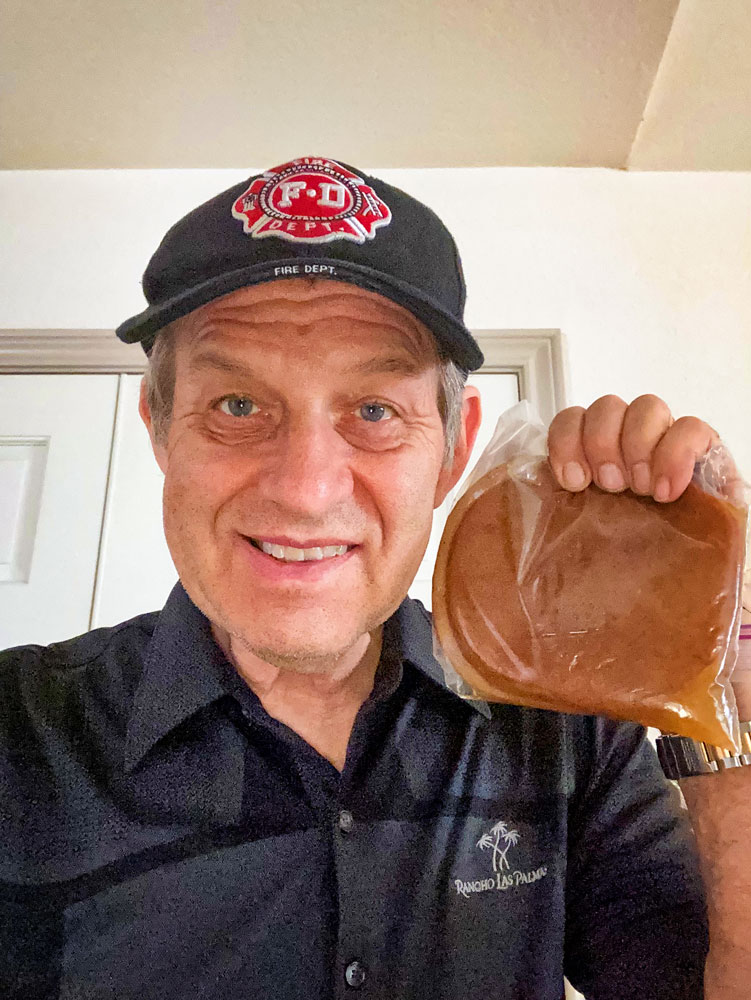Fermented foods and beverages add zest and zing
By Lisa Nicklanovich; photo courtesy of Bill Schaefer

Resident Bill Schaefer holding a SCOBY, a starter culture of bacteria and yeast, which is used to start a batch of homemade kombucha, a fermented tea. Fermented foods and beverages are believed by many to help improve digestion and immunity. Making them at home allows the home cook or brewer to customize the flavors to their liking.
Naturally fermented foods are getting a lot of attention from health experts and consumers lately because they may help strengthen gut microbiome – the 100 trillion or so bacteria and microorganisms that live in the digestive tract, thus increasing the health of the digestive system and enhancing the immune system.
Fermentation is a natural process through which microorganisms like yeast and bacteria convert carbohydrates, such as starch and sugar, into alcohol or acids. Through the fermentation process, beneficial bacteria like probiotics are formed.
Live cultures are found in foods like yogurt and yogurt-like drinks called kefir, but also in kimchi (Korean pickled vegetables), sauerkraut and kombucha (fermented tea).
Resident Bill Schaefer has made four rounds of homemade kombucha and is refining the ingredients and fermentation time with each batch. Only a few ingredients are required to make kombucha: water, tea, sugar, some prepared kombucha and a SCOBY, which is a symbiotic starter culture of bacteria and yeasts. Schaefer said he got his first SCOBY from a neighbor he found on a neighborhood social media platform. SCOBY can also be purchased online.
Try a store-bought kombucha first and see if more of the tart and tangy, effervescent beverage is desired. If making a batch at home sounds like an interesting science experiment, master a basic recipe first. Black, green oolong or white tea are recommended by food editor and home brewing expert Emma Christensen.
Once a basic recipe is mastered, experiment with different types of tea and/or flavorings such as berries or ginger. Schaefer’s current kombucha has a pumpkin spice tea in it, so there is a hint of cinnamon and clove. Schaefer’s kombucha has a balance of tartness and sweetness based on a two-week fermentation. Kombucha will get less sweet the longer it ferments. “I let one batch ferment for a month and it was too strong, too vinegary,” Schaefer said.
Schaefer has also made yogurt and plans to try sauerkraut, which uses white cabbage and is often spiced with caraway seeds. Just a dollop of yogurt, sauerkraut or kimchi, which is usually spiced with chilies and garlic, can elevate a neutral dish. Consuming a small amount of fermented food is a good place to start since some people have sensitivities to them.
Whether buying ready-made or experimenting at home, consuming some fermented foods and beverages can add some zing and zest to one’s diet.